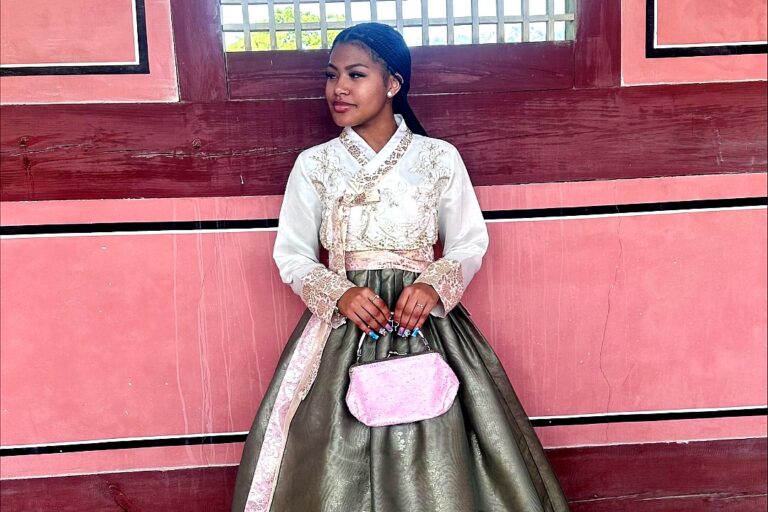The 2022 Master of Fine Arts Exhibition, which runs through May 15 at Michigan State University’s Eli and Edythe Broad Art Museum, is the culmination of a three-year program in which artists explore their creative practice under the supervision of a faculty guidance committee. The exhibition serves as evidence of their achievements and continuing artistic and scholarly promise with each artist doing extensive study in a medium or area of concentration, combined with coursework in the history of art and related fields, helping them situate their work within the broad field of contemporary art and design practices.

The MFA Candidates whose work and creative research are featured in this year’s exhibition include Benjamin Carey, Evan F. Christopherson, Nicolei Buendia Gupit, Hannah Tamiko Mackey, Erik Mueller, and Lillian Young.
Organized by MSU’s Department of Art, Art History, and Design and the Eli and Edythe Broad Art Museum, with curatorial oversight provided by Steven L. Bridges, Senior Curator and Director of Curatorial Affairs, the 2022 Master of Fine Arts Exhibition is supported by the Graduate School at MSU and the John and Susan Berding Family Endowment.
The following is information on each artist and their work.
Benjamin Carey
The inventive nature of Benjamin Carey’s sculptural work combines DIY-aesthetics with an absurdist appeal. The three works on view all approach everyday tasks – some of vital importance, some playful. But functional as the works may be, they rest in the gallery in a more contemplative state.
“I create wearable sculptures that function to solve and subvert the problems of the everyday in unconventional ways,” Carey said. “Disruptive thinking, manic play, and obsessive habit are some of the themes I examine through the lens of humor, absurdity, and exaggeration. My goal is not to express cynicism, but to search for honesty through parody.”

Evan F. Christopherson
In the work of Evan F. Christopherson, the natural landscape is translated into a mechanical one with the capacity to measure the qualities of air in the gallery, reacting to shifting environmental conditions. These conditions – largely through the presence of viewers – activate the installation, making visible the ways in which our breath, bodies, and movement influence the world around us.
“Below Threshold is a mechanical landscape…initiated by the reinterpretation of a gas sensor placed near the installation,” Christopherson said. “The gas sensor monitors the quality and composition of the air and translates the data collected into a waveform similar to how wind passes through a field of grass.”

Nicolei Buendia Gupit
The deeply personal work by artist Nicolei Buendia Gupit brings us together around a sculptural installation in the form of a dinner table. As personal as it may be, the work nonetheless speaks to experiences many of us share. Family and food, and the stories that come with them, shape so much of our lives. Over the course of the exhibition, the installation will change to create three different iterations of the piece.
“Pamilya layers together oral histories, table arrangements, and low-resolution imitations of family meals to expose the challenges in reckoning with one’s attachment to memories,” Gupit said. “By collapsing geographical space, and present and historical times as experienced by my diasporic, transnational family, the work asks: How do we listen more attentively to the vibrant matter of everyday life at the dinner table?”

Hannah Tamiko Mackey
The multifaceted work by Hannah Tamiko Mackey draws upon many influences and the artist’s own personal experiences. Meticulously rendered images create vignettes in an unfolding narrative that is fantastical yet poignant. A tiled pool is filled with water to reflect visitors’ own images and invite reflection on the issues raised in the work and our relationships with them.
“light yellow investigates cultural loss through the anthropological examination of a fictional human-fish hybrid species,” Mackey said, “by manifesting the cultural remains of creatures, I progress the visual language of the hybrid to expose legacies of scientific racism, the polarization of multiculturism, and complexity of mixed subjects.”

Erik Mueller
The thresholds between our inner and outer worlds, the personal and the collective, the real and the virtual are increasingly blurred. Today, our lives play out across these various interfaces and platforms, mediated by our bodies and sensorial capacities. Erik Mueller’s work addresses this ever-shifting terrain.
“Who am I amongst all of this? This work offers three painted scenes for viewers to engage with this question in the context of digital ubiquity,” Mueller said. “Who am I amongst all of this, if I have the ability to perform multiple selves online? And if my laptop is an extension of my memory and myself?”

Lillian Young
In Wanted: Runaways, Lillian Young confronts the limited scope of historical archives to truly represent the lived experiences of individuals living under oppression. Through this work, Young confronts the history of slavery in the United States. While only a section of portraits is presented, the work remains ongoing – as with the need to confront these difficult histories.
“Wanted: Runaways is this series of one hundred oil and ink portraits painted on linen that depict freedom seekers based on the descriptions provided by enslavers and runway ads,” Young said. “Specific details like scars and prominent facial features are painted realistically while surrounded by the actual words from the ads used to describe each figure.”

“The Black Elders, from the series The Problem with Archives: A Portrait is Worth Our World, is composed of portraits of individuals who lived through segregation in the Jim Crow South,” Young said. “Each person featured is an average individual ranging from retired teachers, factory workers, journalists, and activists, such as Juneteenth activist Mrs. Opal Lee. Hung above the elders is a sound Dome that plays recordings of them answering questions about their lives and living through segregation.”
Through portraits in paint and sound, the historical record grows, and so too does our capacity to learn from these important figures.



